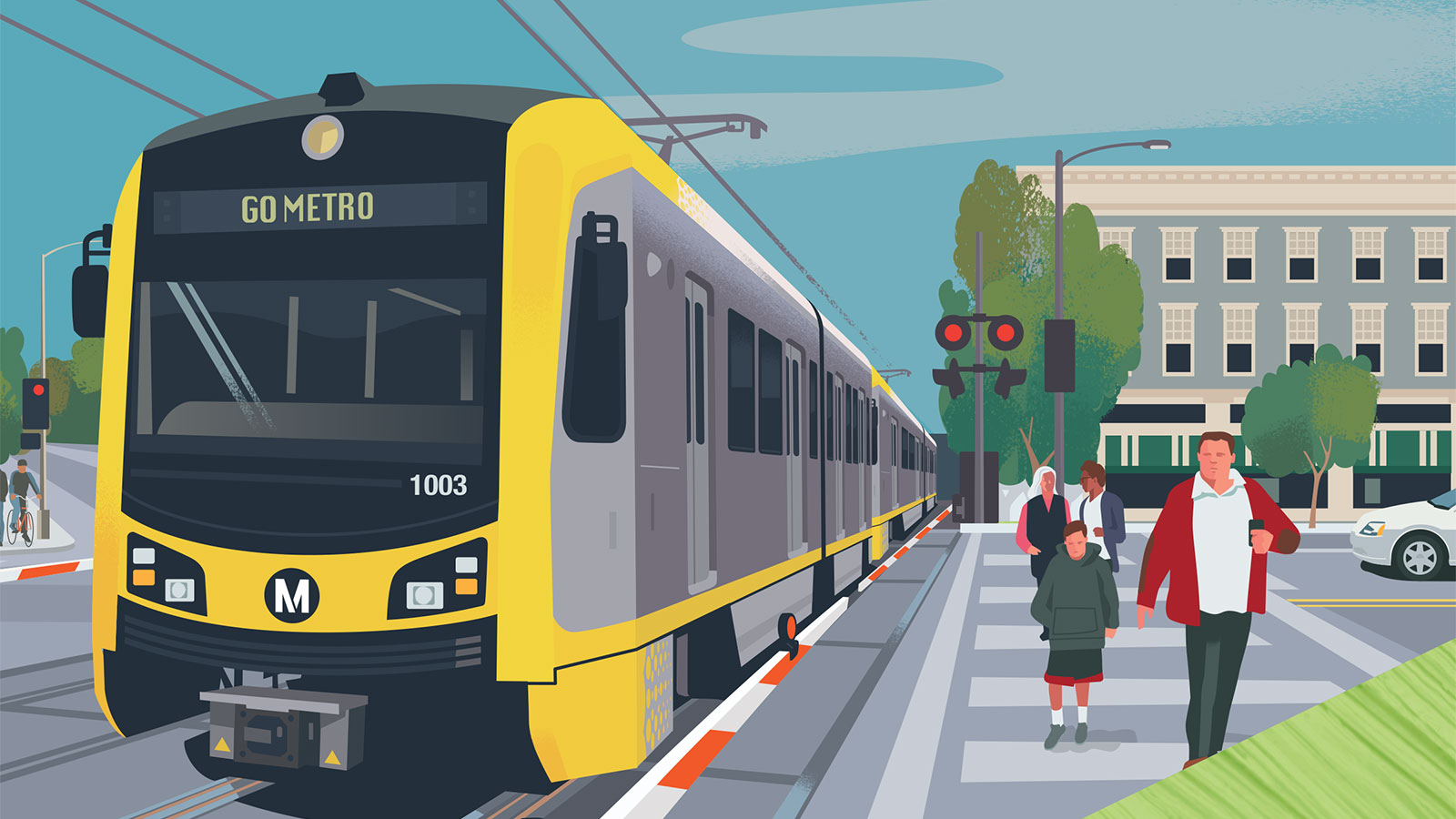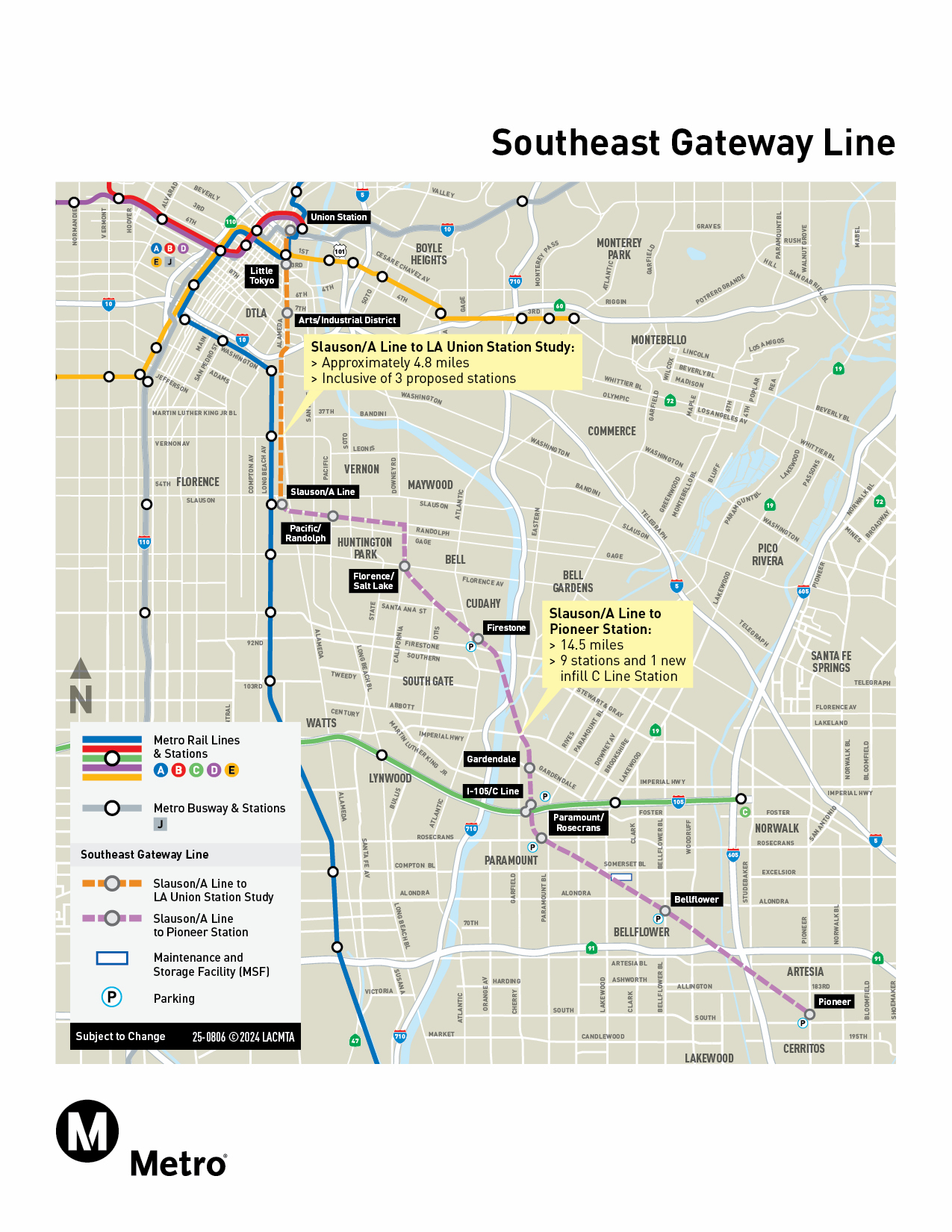Southeast Gateway Line
Connecting communities between Artesia and Downtown LA with new light rail to expand access to opportunities


- Nine new light rail stations
- One new C Line infill station at I-105
- Up to five parking facilities
- A maintenance and storage facility in Bellflower
- 30 at-grade and 15 elevated crossings
proident, sunt in culpa qui officia deserunt mollit anim id est laborum.

Learn More about the Southeast Gateway Line
Active Construction Notices
Learn more about upcoming construction fieldwork, including advance utility adjustment work.
Understand the Details
Tour the interactive map to explore potential routes, station areas and how Southeast LA communities will connect to the Metro Rail system.
Connect with Metro
Stay informed by attending an upcoming community meeting, either virtually or in-person.
Events
No Events Found
Frequently Asked Questions
The environmental review process has been completed. In April 2024, the Metro Board certified the EIR/EIS. In August 2024, the Federal Transit Administration issued a Record of Decision, making the project eligible for federal funding. Additionally, Metro secured $231 million in early-stage state funding through the Transit and Intercity Rail Capital Program (TIRCP) in October 2024. The project is now advancing into the design phase.
